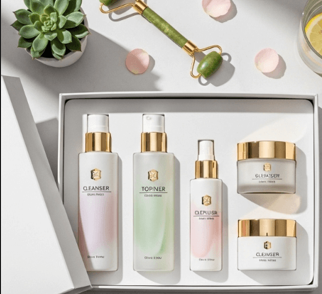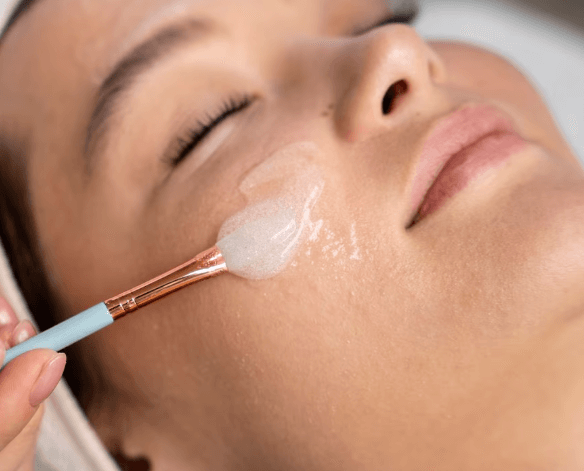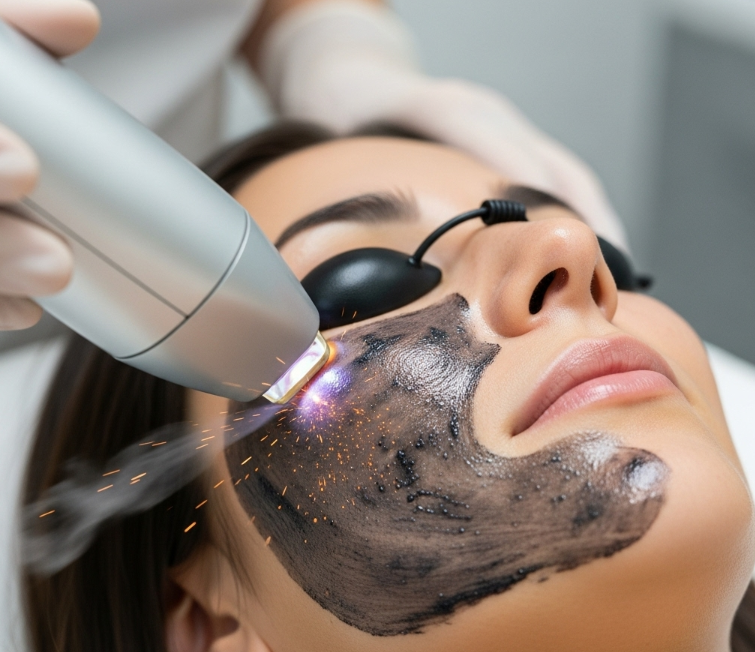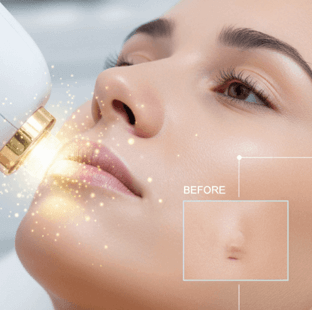Treatment Overview
A customized skincare regimen is one of the most important long-term strategies in Korea for managing redness, flushing, and vascular sensitivity. Korean dermatology emphasizes a multi-step, barrier-first routine designed to calm inflammation, regulate vascular triggers, and prevent flare-ups in rosacea-prone or sensitive skin types.
Unlike one-size-fits-all routines, Korean dermatologists tailor skincare regimens to each patient’s skin triggers, often combining medical-grade products, soothing actives, and sun protection with clinic-based therapies (lasers, infusions, or herbal calming treatments). The focus is on consistency and gentleness, avoiding harsh exfoliation or overly strong actives that could worsen flushing.
For redness and flushing, a Korean Skincare Regimen:
- Calms irritation and vascular reactivity.
- Strengthens and repairs the skin barrier.
- Reduces post-inflammatory redness and flushing.
- Supports and prolongs results from in-clinic treatments.
Purpose & Benefits
- Barrier Repair: Keeps skin resilient with ceramides, panthenol, Centella asiatica, and madecassoside.
- Redness Reduction: Uses soothing botanicals (mugwort, green tea, licorice root).
- Vascular Stability: Minimizes flare-ups triggered by heat, alcohol, or stress.
- Hydration & Balance: Prevents dryness, which worsens flushing.
- Sun Protection: Essential in preventing rosacea and erythema relapses.
Ideal Candidates
A Korean Skincare Regimen is recommended for:
- Patients with rosacea-related redness and flushing.
- Individuals with post-acne erythema or vascular scarring.
- Adults with sensitive skin prone to irritation.
- Patients undergoing laser or antibiotic therapy who need supportive care.
- Those seeking a non-invasive, daily maintenance plan for redness control.
Comparison with Other Treatments
- Skincare Regimen: Gentle, daily, and preventive; builds foundation for redness control.
- Anti-Redness Lasers (PDL, V-Beam, Nd:YAG): Strong vascular targeting; not daily use.
- Antibiotics (Doxycycline, Minocycline): Systemic control of inflammation; prescription-based.
- Beta-Blockers (Propranolol, Carvedilol): Control adrenaline-triggered flushing; systemic option.
- Herbal Soothing Therapy: Clinic-based calming infusion; natural but less daily-focused.
- Cooling Masks: Immediate calming after treatments; not a replacement for daily skincare.
- Erythema-Reducing Creams: Daily topical therapy; may be included in regimen.
Possible Risks & Complications
While safe, poor regimen choices may cause:
- Irritation from harsh cleansers or exfoliants.
- Flare-ups if using strong acids, scrubs, or retinoids without guidance.
- Worsened flushing if skincare includes alcohol or fragrance.
- Ineffectiveness if inconsistent use or poor sun protection.
Treatment Techniques Used
A Korean redness-control regimen often includes:
- Gentle Cleansing: Low-pH, sulfate-free cleansers to avoid stripping.
- Soothing Toners & Essences: Centella, mugwort, green tea for calming.
- Barrier Serums & Ampoules: Panthenol, ceramides, hyaluronic acid, peptides.
- Moisturizers: Non-comedogenic, fragrance-free creams that lock in hydration.
- Erythema-Reducing Creams (Brimonidine, Centella-based): For daily vascular control.
- Sunscreens: Mineral-based or sensitive-skin formulas (SPF 30–50).
Frequency: Twice daily (AM & PM), with modifications during flare-ups.
Recovery & Aftercare
- Immediately: Skin feels calmer and more hydrated.
- 2–4 Weeks: Reduced baseline redness and fewer flushing episodes.
- Maintenance: Long-term vascular stability when regimen is consistently followed.
Aftercare Tips:
- Avoid harsh exfoliants and hot water.
- Stick to fragrance-free, alcohol-free products.
- Layer hydration (essence + serum + moisturizer) to reduce heat sensitivity.
- Reapply sunscreen every 3–4 hours during the day.
Results & Longevity
- Short-Term (1–2 Weeks): Skin feels soothed, flushing less reactive.
- Medium-Term (1–2 Months): Barrier significantly stronger, redness stabilized.
- Long-Term: Durable control of redness and flushing with consistent regimen adherence.
Treatment Process in Korea
- Consultation & Skin Analysis – Dermatologist examines redness triggers, skin barrier status, and lifestyle.
- Customized Plan – Regimen tailored with medical-grade products or prescriptions.
- Instruction & Education – Proper application steps explained.
- Clinic Add-Ons – Regimen paired with in-clinic cooling masks, infusions, or lasers for faster results.
- Follow-Up – Adjustments made every few months to optimize regimen.
Why Korea is a Top Destination
- Korea is a leader in sensitive-skin skincare formulations (Centella, mugwort, propolis).
- Dermatologists combine cosmeceuticals and medical-grade topicals for tailored care.
- Affordable compared to Western prescriptions and boutique skincare brands.
- Extensive multi-step skincare philosophy focuses on barrier-first care.
- Korean clinics integrate skincare regimens with lasers and herbal therapies for holistic redness control.
Cost Range (Detailed Breakdown)
Pricing for a Korean Redness & Flushing Skincare Regimen:
- Dermatologist Consultation: USD 20 – 50.
- Medical-Grade Cleansers / Toners: USD 20 – 40.
- Soothing Serums & Ampoules (Centella, Panthenol, Propolis): USD 30 – 80.
- Barrier Moisturizers: USD 25 – 60.
- Erythema-Reducing Prescription Creams: USD 20 – 50.
- Sunscreens for Sensitive Skin: USD 20 – 40.
- Clinic Packages (Regimen + Cooling Masks + Infusions): USD 300 – 800.
💡 Patients often call this the “daily skin defense system”, since it prevents flare-ups and supports long-term vascular stability.
Popular Clinics in Seoul
- Oracle Dermatology – Customized skincare regimens with medical-grade redness products.
- Banobagi Dermatology – Sensitive skin programs combining daily regimens with barrier repair therapy.
- Renewme Skin Clinic – Skincare routines paired with prescription redness creams.
- View Plastic & Dermatology – Multi-step regimens + cooling therapies for rosacea patients.
- Chaum Anti-Aging Center – Premium skincare planning with regenerative serums and anti-redness infusions.




